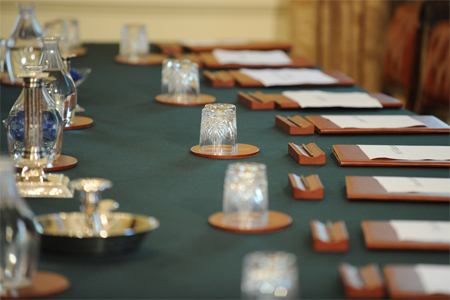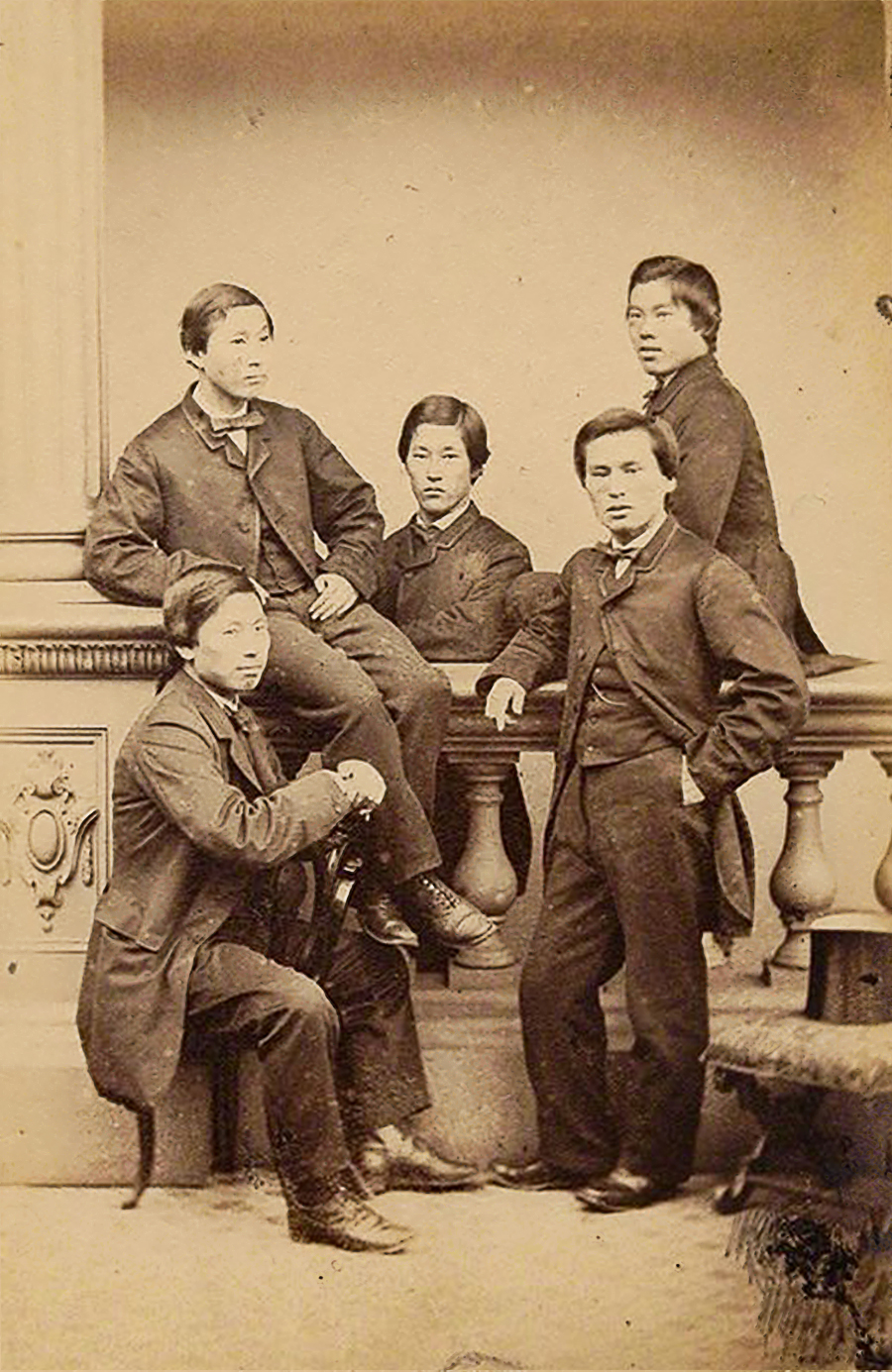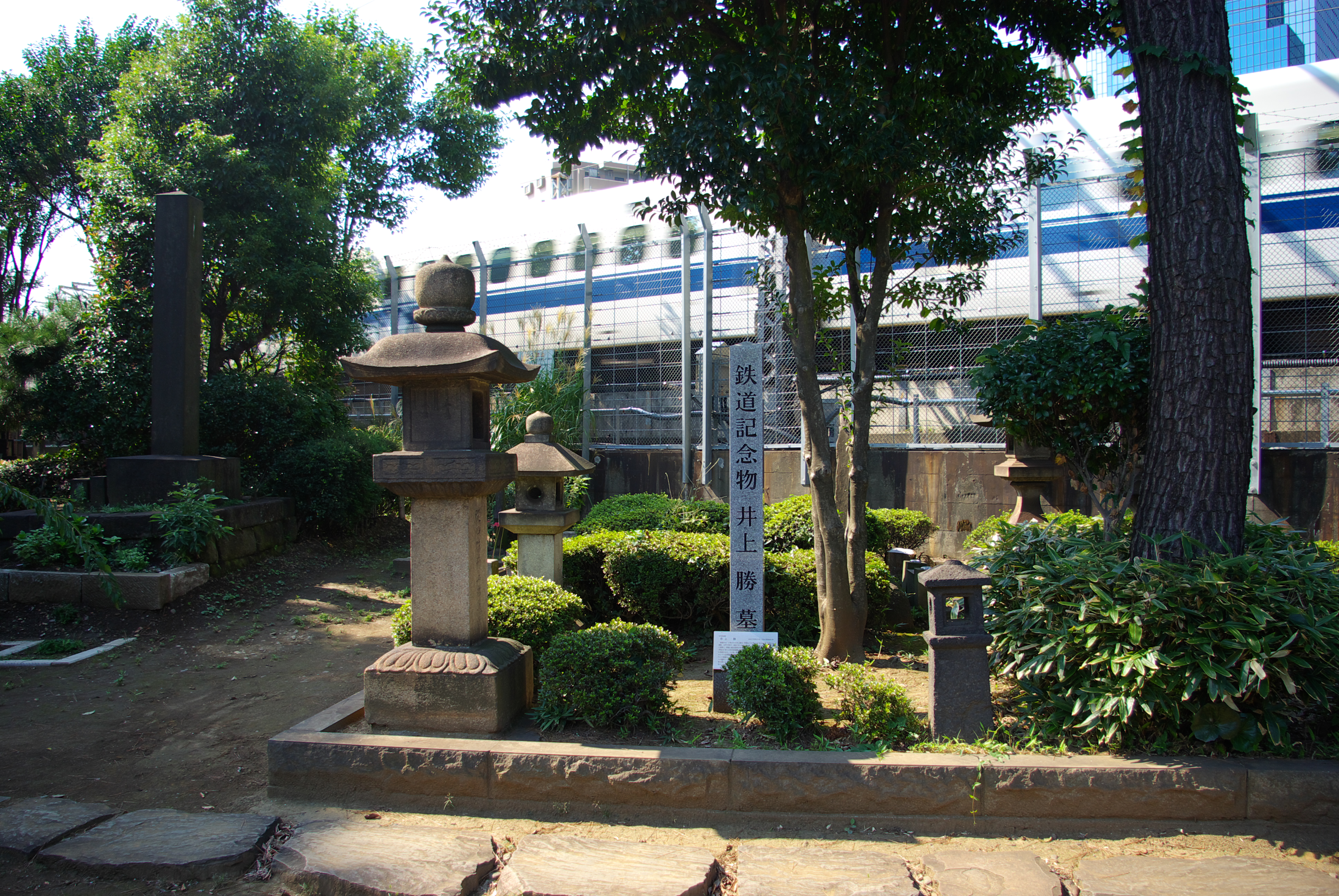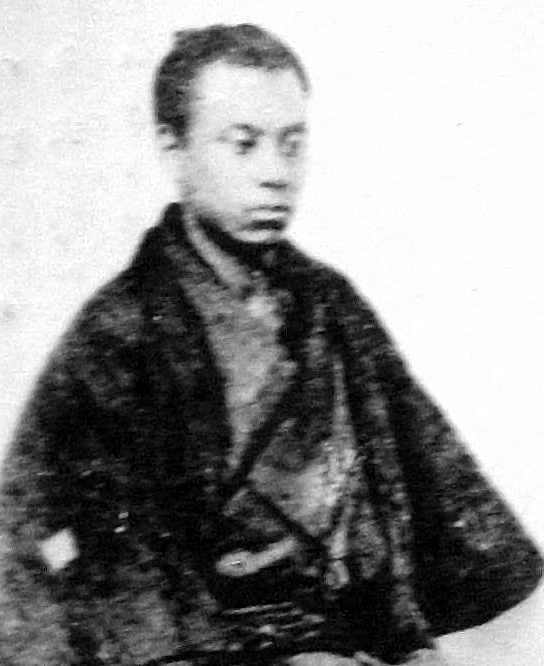|
Ministry Of Industry (Japan)
The was a cabinet-level ministry in the Daijō-kan system of government of the Meiji period Empire of Japan from 1870 to 1885. It is also sometimes referred to as the “Ministry of Engineering” or “Ministry of Industry”. History The Cabinet officially announced the establishment of the Public Works on December 12, 1870, by the advice of Edmund Morel, chief engineer of the Railway Construction to achieve rapid social and industrial development. After long arguments of 10 months, on September 28, 1871, the Meiji government completed arrangement of organization of 11 departments, which were mostly transferred from the Ministry of Civil Affairs. It included railroads, shipyards, lighthouses, mines, an iron and steel industry, telecommunication, civil works, manufacturing, industrial promotion, engineering institution and survey. Each department had to be relied on the foreign advisor and officer for a while, but gradually replaced them with Japanese engineers, who received ... [...More Info...] [...Related Items...] OR: [Wikipedia] [Google] [Baidu] |
Cabinet (government)
A cabinet in governing is a group of people with the constitutional or legal task to rule a country or state, or advise a head of state, usually from the executive branch. Their members are known as ministers and secretaries and they are often appointed by either heads of state or government. Cabinets are typically the body responsible for the day-to-day management of the government and response to sudden events, whereas the legislative and judicial branches work in a measured pace, in sessions according to lengthy procedures. The function of a cabinet varies: in some countries, it is a collegiate decision-making body with collective responsibility, while in others it may function either as a purely advisory body or an assisting institution to a decision-making head of state or head of government. In some countries, particularly those that use a parliamentary system (e.g., the United Kingdom), the cabinet collectively decides the government's direction, especially in ... [...More Info...] [...Related Items...] OR: [Wikipedia] [Google] [Baidu] |
Itō Hirobumi
Kazoku, Prince , born , was a Japanese statesman who served as the first prime minister of Japan from 1885 to 1888, and later from 1892 to 1896, in 1898, and from 1900 to 1901. He was a leading member of the ''genrō'', a group of senior statesmen that dictated policy during the Meiji era. Born into a poor farming family in the Chōshū Domain, Itō and his father were adopted into a low-ranking samurai family. After the opening of Japan in 1854, he joined the nationalist ''sonnō jōi'' movement before being sent to England to study at University College London in 1863. Following the Meiji Restoration of 1868, Itō was appointed the junior councilor for foreign affairs in the newly formed Empire of Japan. In 1870, he traveled to the United States to study Western currency, and subsequently helped establish Japan's taxation system in 1871. Itō then set off on another overseas trip with the Iwakura Mission to the U.S. and Europe. Upon his return to Japan in 1873, he became a f ... [...More Info...] [...Related Items...] OR: [Wikipedia] [Google] [Baidu] |
1870 Establishments In Japan
Year 187 ( CLXXXVII) was a common year starting on Sunday of the Julian calendar. At the time, it was known as the Year of the Consulship of Quintius and Aelianus (or, less frequently, year 940 ''Ab urbe condita''). The denomination 187 for this year has been used since the early medieval period, when the Anno Domini calendar era became the prevalent method in Europe for naming years. Events By place Roman Empire * Septimius Severus marries Julia Domna (age 17), a Syrian princess, at Lugdunum (modern-day Lyon). She is the youngest daughter of high-priest Julius Bassianus – a descendant of the Royal House of Emesa. Her elder sister is Julia Maesa. * Clodius Albinus defeats the Chatti, a highly organized German tribe that controlled the area that includes the Black Forest. By topic Religion * Olympianus succeeds Pertinax as bishop of Byzantium (until 198). Births * Cao Pi, Chinese emperor of the Cao Wei state (d. 226) * Gu Shao, Chinese official and polit ... [...More Info...] [...Related Items...] OR: [Wikipedia] [Google] [Baidu] |
Government Of The Empire Of Japan
A government is the system or group of people governing an organized community, generally a state. In the case of its broad associative definition, government normally consists of legislature, executive, and judiciary. Government is a means by which organizational policies are enforced, as well as a mechanism for determining policy. In many countries, the government has a kind of constitution, a statement of its governing principles and philosophy. While all types of organizations have governance, the term ''government'' is often used more specifically to refer to the approximately 200 independent national governments and subsidiary organizations. The main types of modern political systems recognized are democracies, totalitarian regimes, and, sitting between these two, authoritarian regimes with a variety of hybrid regimes. Modern classification systems also include monarchies as a standalone entity or as a hybrid system of the main three. Historically prevalent forms ... [...More Info...] [...Related Items...] OR: [Wikipedia] [Google] [Baidu] |
Former Government Ministries Of Japan
A former is an object, such as a template, gauge or cutting die, which is used to form something such as a boat's hull. Typically, a former gives shape to a structure that may have complex curvature. A former may become an integral part of the finished structure, as in an aircraft fuselage, or it may be removable, being used in the construction process and then discarded or re-used. Aircraft formers Formers are used in the construction of aircraft fuselage, of which a typical fuselage has a series from the nose cone to the empennage, typically perpendicular to the longitudinal axis of the aircraft. The primary purpose of formers is to establish the shape of the fuselage and reduce the column length of stringers to prevent instability. Formers are typically attached to longerons, which support the skin of the aircraft. The "former-and-longeron" technique (also called stations and stringers) was adopted from boat construction, and was typical of light aircraft built until ... [...More Info...] [...Related Items...] OR: [Wikipedia] [Google] [Baidu] |
Inoue Masaru (bureaucrat)
Viscount was the first Director of Railways in Japan and is known as the "father of the Japanese railways". Biography He was born into the Chōshū clan at Hagi, Yamaguchi, the son of Katsuyuki Inoue. He was briefly adopted into the Nomura family and became known as Nomura Yakichi, though he was later restored to the Inoue family. Masaru Inoue was brought up as the son of a samurai belonging to the Chōshū fief. At 15, he entered the Nagasaki Naval Academy established by the Tokugawa shogunate under the direction of a Dutch naval officer. In 1863, Inoue and four friends from the Chōshū clan stowed away on a vessel to the United Kingdom. He studied civil engineering and mining at University College London and returned to Japan in 1868. After working for the government as a technical officer supervising the mining industry, he was appointed Director of the Railway Board in 1871. Inoue played a leading role in Japan's railway planning and construction, including the construc ... [...More Info...] [...Related Items...] OR: [Wikipedia] [Google] [Baidu] |
Yoshii Tomozane
Yoshii () may refer to: Places *Yoshii, Fukuoka, a former town in Fukuoka Prefecture * Yoshii, Gunma, a former town in Gunma Prefecture *Yoshii, Nagasaki, a former town in Nagasaki Prefecture *Yoshii, Okayama (Akaiwa) was a town located in Akaiwa District, Okayama Prefecture, Japan. As of 2006, the town had an estimated population of 5,386 and a density of 62.58 persons per km2 and 1,963 families. The total area was 86.07 km2. On March 7, 2005, Yoshii, along ... (吉井町), a former town in Akaiwa District, Okayama Prefecture * Yoshii, Okayama (Shitsuki) (芳井町), a former town in Shitsuki District, Okayama Prefecture Other uses * Yoshii (surname) {{disambiguation, geo ... [...More Info...] [...Related Items...] OR: [Wikipedia] [Google] [Baidu] |
Sasaki Takayuki
Marquis was a bureaucrat, government minister and court official in late Meiji period Japan. Biography Sasaki was born into a samurai class family in Agawa District, Tosa Domain (in the present-day city of Kōchi, Kōchi Prefecture). He served the Yamauchi clan in several important posts, including '' kōri-bugyō'' (country magistrate) and ''ōmetsuke'' (inspector). He also supported Sakamoto Ryōma in the ''Taisei hōkan'' movement to restore political power to the Emperor of Japan at the expense of the Tokugawa Shogunate. During the Boshin War, he commanded the ''Kaientai'', a paramilitary group of Tosa samurai youths, and occupied the Tokugawa magistrate's office at Nagasaki , officially , is the capital and the largest Cities of Japan, city of Nagasaki Prefecture on the island of Kyushu in Japan. Founded by the Portuguese, the port of Portuguese_Nagasaki, Nagasaki became the sole Nanban trade, port used for tr .... After the Meiji Restoration, Sasaki served the ... [...More Info...] [...Related Items...] OR: [Wikipedia] [Google] [Baidu] |
Yamao Yōzō
Viscount was a Japanese samurai of the late Edo period who became an influential member of the Meiji era government of Japan. Early life Yamao was born in Aio-Futajima, a village in Chōshū domain (present day Yamaguchi prefecture), and received a traditional training as a Samurai. He was eager to learn science, and entered the Egawa School in Edo, then continued studying under Takeda Hishisaburo, a samurai engineer at Hakodate. In the end of 1862, he joined extremist group of Chōshū domain, and set fire to newly completed British Legation building on Gotenyama. Five of the young Choshu samurais, so called Chōshū Five soon left Japan for London from Nagasaki to study western knowledge in 1863 with help of Thomas Blake Glover. Studies and training in Britain Before being able to study at the University College London, the members of the Choshu Five studied English for a year. Two of his colleagues Itō Hirobumi and Inoue Kaoru returned to Japan to try and stop Ch ... [...More Info...] [...Related Items...] OR: [Wikipedia] [Google] [Baidu] |
Yamada Akiyoshi
Count was a Japanese politician, samurai, and one of the early leaders of the Meiji Restoration. He served as Minister of Justice from 1885 to 1891. In his youth he was commonly known as Yamada Ichinojō; however, he changed his name frequently during the Bakumatsu period. Biography Early career as a samurai Yamada was born in Abu District, Nagato Province (in what is now part of the city of Hagi, Yamaguchi), and was the son of a samurai official of the Chōshū Navy with a 102 ''koku'' territory. After studies at the domain's Meirinkan Academy (where he studied the ''Yagyū Shinkage-ryū'' school of Japanese swordsmanship), he joined the '' Shōkasonjuku Academy'' run by Yoshida Shōin in June 1857. He was the youngest student of the ''Shōkasonjuku''. He was in the retinue of Chōshū ''daimyō'' in Kyoto Kyoto ( or ; Japanese language, Japanese: , ''Kyōto'' ), officially , is the capital city of Kyoto Prefecture in the Kansai region of Japan's largest and m ... [...More Info...] [...Related Items...] OR: [Wikipedia] [Google] [Baidu] |
Inoue Kaoru
Marquess Inoue Kaoru (井上 馨, January 16, 1836 – September 1, 1915) was a Japanese politician and a prominent member of the Meiji oligarchy during the Meiji period of the Empire of Japan. As one of the senior statesmen ('' Genrō'') in Japan during that period, he had a tremendous influence on the selection of the nation's leaders and formation of its policies. Early life and education Born Yakichi (勇吉) to a lower-ranked ''samurai'' family in Yuda, Chōshū domain (present day Yamaguchi, Yamaguchi Prefecture), Inoue attended the '' Meirinkan'' domain school with his brother Ikutarō (幾太郎). He was a close boyhood friend of Itō Hirobumi who later became Japan's first prime minister, and he played an active part in the '' sonnō jōi'' movement. In 1858, he studied '' rangaku'', artillery and swordsmanship in Edo. In the Bakumatsu period, Inoue emerged as a leader of the anti-foreigner movement in his native Chōshū. Desiring to rid Japan of foreigners, ... [...More Info...] [...Related Items...] OR: [Wikipedia] [Google] [Baidu] |






